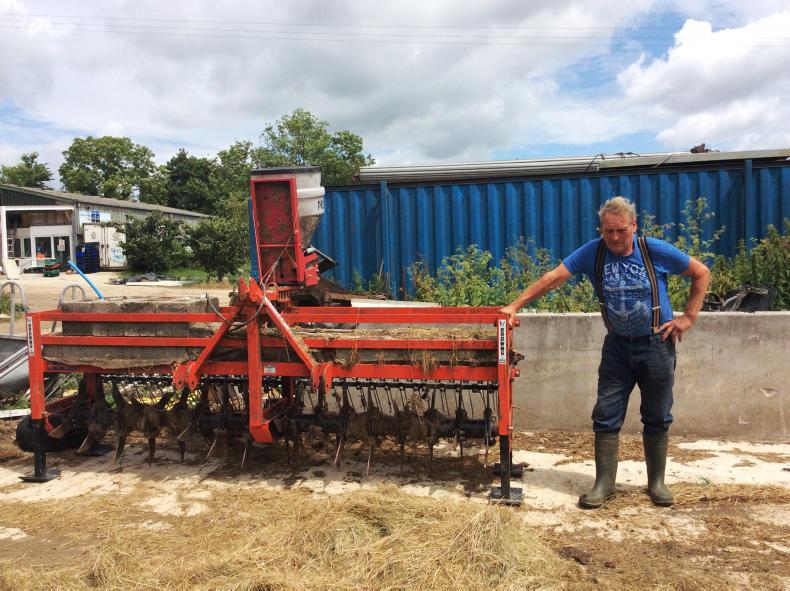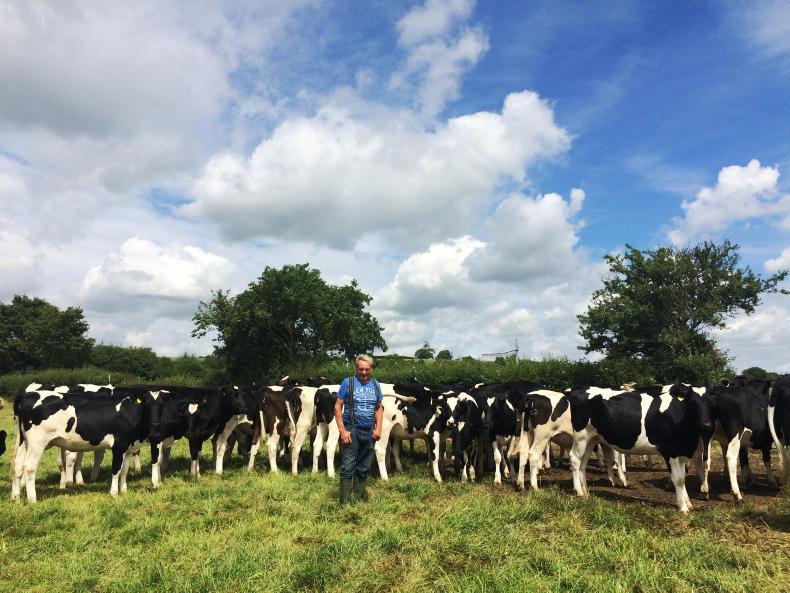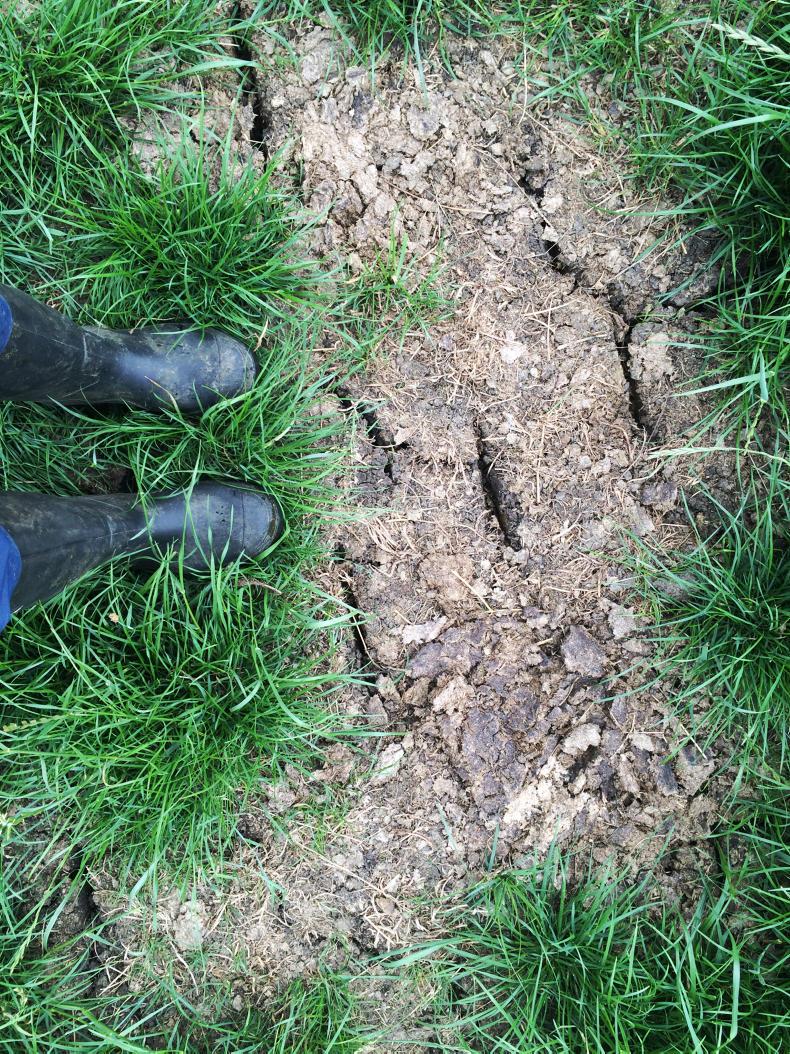Last year, we purchased a pasture seeder-aerator. I was quite sceptical at the time, but it has since proved its worth.
A worn-out grass ley, which was spiked and seeded last autumn, has yielded very well, as has another which was spiked and seeded in the spring.
Half of one of the young stock paddocks, which is in permanent pasture, was only spiked last autumn. This spring, on the second grazing, it yielded 3,800kg DM/ha on the spiked portion, while it was 3,500kg DM/ha on the unspiked area.
This response demonstrates the benefits of spiking and aerating compacted grass land, but it is critical that you use the machine at the right time.
We were caught out by the recent spell of hot weather this spring because, as we were warned, in the hot weather the slits stay open.
And we have been left with some deep slits.
It has been a very grassy spring – although there has been no spring flush in terms of national milk yields and the spot price is going through the ceiling. However, the processors are reluctant to increase the "B price" (the milk price set after the product has been sold), which is still in the low to mid-20s.
Grass struggles
Grass growth here has further slowed due to three weeks of hot weather. The final day of the hot spell was 34 degrees, and don't we know it, we had to lay six metres of concrete. We all took turns in the tractor cab with the air con blasting on full.
As always, I was reluctant to put fertiliser on in the dry spell, which meant a three-week break.
We managed to cover all of the grazing ground just before the rains came, but we are having to buffer-feed until the grass catches up.
This is always a conundrum as it seems sensible to wait, but then we pay in subsequent grass growth. Another factor in hot weather is that our contractor is always very busy baling and not keen to put the fertiliser spreader on.
We are about to take second cuts and we are very lucky that our feed supplier analyses weekly grass samples for free.
I don't know why more farmers don't take advantage of this as they seem to analyse everything except for their grassland.
The proteins in the grazing paddocks have been running consistently at 20-25%. The silage grounds, which we are about to cut, have crude proteins of 17%, but because we have been delayed by the rain the ME has dropped to 10MJ/kg as the grass has gone to head.
Read more
Farmer writes: physical work doesn't appeal to the WiFi generation
Farmer Writes: the bobby calf-shapped problem at Moorepark
Last year, we purchased a pasture seeder-aerator. I was quite sceptical at the time, but it has since proved its worth.
A worn-out grass ley, which was spiked and seeded last autumn, has yielded very well, as has another which was spiked and seeded in the spring.
Half of one of the young stock paddocks, which is in permanent pasture, was only spiked last autumn. This spring, on the second grazing, it yielded 3,800kg DM/ha on the spiked portion, while it was 3,500kg DM/ha on the unspiked area.
This response demonstrates the benefits of spiking and aerating compacted grass land, but it is critical that you use the machine at the right time.
We were caught out by the recent spell of hot weather this spring because, as we were warned, in the hot weather the slits stay open.
And we have been left with some deep slits.
It has been a very grassy spring – although there has been no spring flush in terms of national milk yields and the spot price is going through the ceiling. However, the processors are reluctant to increase the "B price" (the milk price set after the product has been sold), which is still in the low to mid-20s.
Grass struggles
Grass growth here has further slowed due to three weeks of hot weather. The final day of the hot spell was 34 degrees, and don't we know it, we had to lay six metres of concrete. We all took turns in the tractor cab with the air con blasting on full.
As always, I was reluctant to put fertiliser on in the dry spell, which meant a three-week break.
We managed to cover all of the grazing ground just before the rains came, but we are having to buffer-feed until the grass catches up.
This is always a conundrum as it seems sensible to wait, but then we pay in subsequent grass growth. Another factor in hot weather is that our contractor is always very busy baling and not keen to put the fertiliser spreader on.
We are about to take second cuts and we are very lucky that our feed supplier analyses weekly grass samples for free.
I don't know why more farmers don't take advantage of this as they seem to analyse everything except for their grassland.
The proteins in the grazing paddocks have been running consistently at 20-25%. The silage grounds, which we are about to cut, have crude proteins of 17%, but because we have been delayed by the rain the ME has dropped to 10MJ/kg as the grass has gone to head.
Read more
Farmer writes: physical work doesn't appeal to the WiFi generation
Farmer Writes: the bobby calf-shapped problem at Moorepark






 This is a subscriber-only article
This is a subscriber-only article







SHARING OPTIONS: